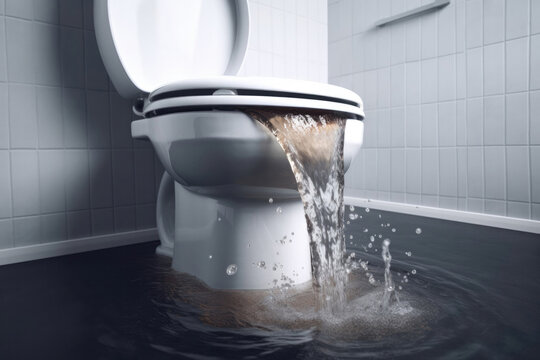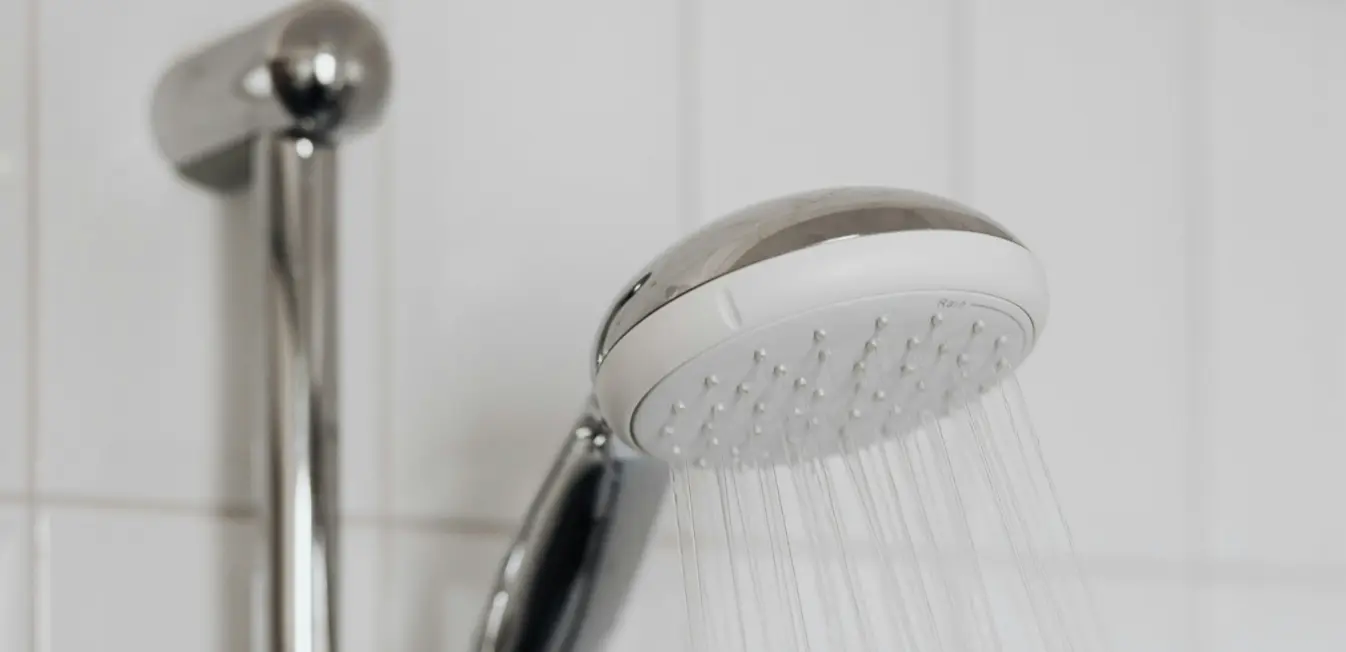
Have you ever thought how much we take our toilets for granted?
We expect them to function perfectly all the time, no matter how much we use them in a day.
Toilet repairs rarely make it onto the priority list, but guess what? When problems start occurring, you might regret neglecting them.
Let’s take a closer look at the issue, whether it’s a toilet slowly filling or a leaking toilet base, and explore how to fix an overflowing toilet.
Table of Contents
4 Reasons Toilet is Overflowing

There are four common reasons why toilets keep overflowing.
The cause might be a clog in the sewer system, a blocked drain, a full septic tank if you have one, or even a problem with the toilet’s float mechanism.
Let’s find out in more details:
1. Clogged Sewerage System
A clogged sewerage system, often resulting from household materials such as tissue, feminine hygiene products, or pet littering, can also cause an overflow. These items are not designed to be flushed and can create significant blockages in the sewer lines. In such cases, it’s essential to avoid flushing inappropriate materials down the toilet.
If the system is already clogged, contacting a professional plumbing service in Melbourne may be necessary to clear the blockage and prevent further issues.
2. Blocked Drain
A blocked drain is a primary reason for a toilet overflow. Over time, waste material, tissue, and other debris can accumulate in the drain pipes, leading to a blockage. When you flush the toilet, the water has nowhere to go, causing it to back up and overflow.
To address this, use a plunger to attempt to clear the blockage. If plunging doesn’t work, a plumber’s snake or a drain auger can be used to reach deeper clogs.
3. Full Septic Tank
A full septic tank can cause the toilet to overflow in homes with septic systems. When the tank is full, the wastewater cannot flow into it, causing it to back up into the house. Regular maintenance, including pumping the septic tank every few years, is crucial to prevent this problem.
If you suspect your septic tank is full, schedule a professional inspection and pumping service.
4. Faulty Float Setting
The float setting in the toilet tank regulates the water level. If the float is set too high, the tank will fill with too much water, causing it to overflow. To stop a toilet from overflowing due to a faulty float setting, adjust the float so that the water level in the tank is about an inch below the top of the overflow tube.
This can often be done by bending the float arm or adjusting the float mechanism, depending on the toilet model.
What To Do If the Toilet Overflows: 6 Actionable Tasks

“My toilet is overflowing and I have no idea what to do” might be something that sits on your mind a lot. Knowing what to do when toilet overflows will save you a lot in the future.
Here’s detailed steps to guide you about how to stop toilet from overflowing:
1. Cut Off the Water Supply
The moment you notice the toilet overflowing, the priority is to stop more water from entering the bowl. Locate the toilet’s shutoff valve, typically found on the wall behind the toilet near the base. Turn the valve clockwise to cut off the water supply. If you cannot find or reach the valve, open the toilet tank and lift the float to stop water flow.
2. Identify the Source of the Overflow
Next, determine what’s causing the overflow. Common reasons include blockages in the toilet trap, drain pipes, or even the main sewer line. In some cases, it could be due to a malfunctioning float mechanism in the tank, causing continuous water flow. Understanding the source helps you decide how to stop a toilet from overflowing.
3. Clean the Excess Water
Before tackling the blockage, address the mess. Use towels, a mop, or a wet/dry vacuum to clean up the excess water around the toilet. Be sure to wear gloves and, if possible, disinfect the area afterward to avoid potential health risks from the contaminated water. Cleaning up promptly minimises water damage to your floors and prevents mold growth.
4. Plunge the Toilet
With the water supply off and the area cleaned, it’s time to deal with the blockage, but how can you unclog the toilet?
Use a toilet plunger to try and dislodge whatever is causing the obstruction. Ensure you have a good seal with the plunger over the drain hole, then push and pull vigorously. The pressure created by the plunging action can often free minor blockages and restore normal flow.
Also Read: How to Unblock a Toilet
5. Snake the Drain if the Plunge Was Not Enough
If plunging doesn’t solve the problem, the next step is to use a drain snake, also known as a toilet auger. This tool can reach further into the drain than a plunger and physically break up or pull out the blockage.
Insert the snake into the toilet drain and rotate it as you push it through the pipes. Once you feel resistance, you may have reached the blockage; try to break it up or hook it to pull it out.
6. Call for Professional Help
If you’ve tried plunging and snaking the drain without success, or if the problem recurs frequently, it’s time to call a professional plumber. Persistent issues might indicate a deeper problem than just toilet overflowing when flushed. It’s within your plumbing system that requires specialised equipment and expertise to resolve.
A plumber can conduct a thorough inspection, identify the underlying cause, and provide a permanent solution.
Conclusion
Handling an overflowing toilet can be stressful, but following these steps methodically helps you know what to do if the toilet is overflowing. If the issue persists or is linked to a septic system, do not hesitate to seek professional help.
Call Neighbourhood Plumbing now to get your toilet back to normal and be stress-free in an instant!
About the Author
From unclogging the toughest drains to repairing leaking toilets, Ricky is a seasoned plumber who has brought his craftmanship to homes across Melbourne. He is as passionate about sharing plumbing tips just as much as he is about fixing your plumbing issues. So, when your taps or pipes begin leaking, you know who to call.





